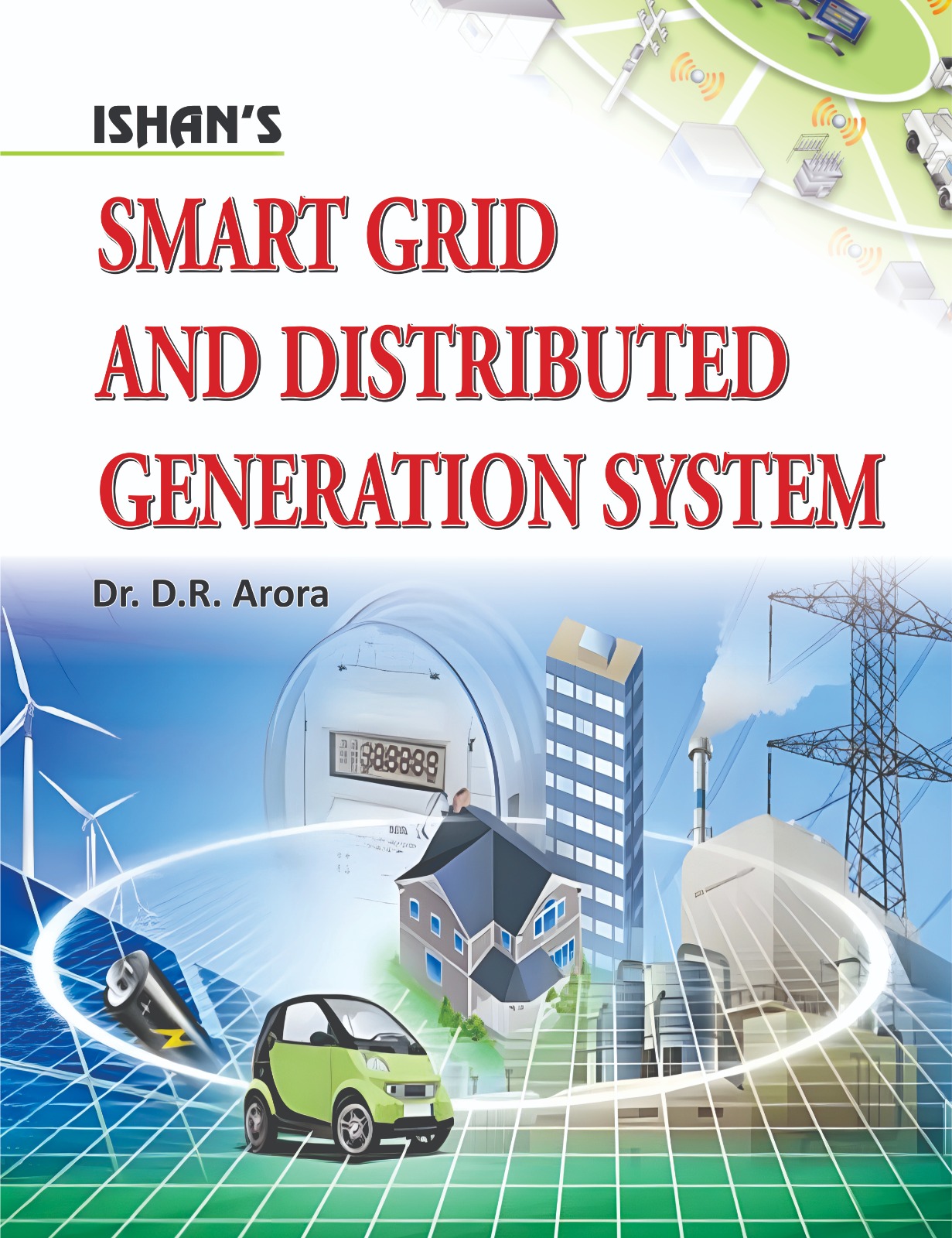By: Dr. D.R. Arora
1. INTRODUCTION TO SMART GRID .................................................................1–20
1.1 Conventional Grid System
1.2 Evolution of Electric Grid in India
1.3 Regulatory Authority in Indian Power System
1.3.1 Functions of CERC
1.4 Introduction to Smart Grid System
1.5 Need of Smart Grid
1.6 Benefits of Smart Grid
1.7 Key Features of Smart Grid
1.8 Challenges of Smart Grid
1.9 Difference Between Conventional and Smart Grids
1.10 Operational
1.11 Factors for Introduction
1.12 Functions of Smart Grid
1.13 Regulatory Challenges in Smart Grid
1.14 Scenario of Smart Grid in India
Exercise
2. SMART GRID ARCHITECTURE ....................................................................... 21–53
2.1 What is a Smart Grid?
2.2 Blocks of Smart Grid
2.3 Necessity of Smart Grid
2.4 Functions of Smart Grid
2.5 Bulk Generation Domain
2.6 Transmission Domain
2.7 Distribution Domain
2.8 Operation Domain
2.9 Consumer Domain
2.10 Service Provider Domain
2.11 Market Domain
2.12 Smart Devices Interface Component
2.13 Energy Storage Component
2.14 Monitoring and Control Component
2.15 Demand Management Component
2.16 Digital Communication Network
2.17 Distribution Automation Component
2.18 Smart Grid Architecture
2.18.1 Smart Grid Architecture
2.19 Smart Transmission
2.19.1 Smart Substation
2.20 Sensing and Measurements
2.21 Phasor Measurement Units
2.22 Remote Terminal Unit (RTU)
2.23 Outage Management System (OMS)
2.24 Communication architecture of Smart Grid
2.24 Field /Neighbourhood Area Network
2.25 Home Area network (HAN)
Exercise
3. SMART GRID TECHNOLOGY......................................................................... 54–80
3.1 Introduction
3.2 Smart Grid and Communication
3.3 Communication Architecture
3.4 PLCC (Power Line Carrier Communication)
3.5 Optical Fiber Cable (OFC)
3.6 VST (Very Small aperture Terminal)
3.7 Types of Networks
3.7.1 Home Area Network (HAN)
3.7.2 Neighbourhood Area Network (NAN)
3.7.3 WLAN
3.8 Measurement Technology in Smart Grid
3.8.1 Various Functions Performed by AMI are
3.8.2 Block Diagram of AMI
3.9 Smart Energy Management
3.9.1 Analysis of Energy Management
3.10 Conventional Energy Meter
3.10.1 Components of Smart Meter
3.10.2 Specifications of Smart Energy Meter
3.10.3 Advantages of Smart Metering
3.11 Advanced Metering Infrastructure (AMI)
3.11.1 Objectives of AMI
3.11.2 Benefits of AMI
3.11.3 Disadvantages of AMI
3.11.4 Security Requirements of AMI
3.11.5 Basic Components of Advance Metering Infrastructure
Exercise
4. DISTRIBUTED GENERATION SYSTEM ......................................................... 81–105
4.1 Introduction
4.2 Need of Distributed Generation (DG)
4.3 Advantages of Distribution Generation
4.4 Selection of Resources for DG
4.5 Standards for Interconnecting Distributed Resources (DR) to Electric Power
System : IEEE 1547
4.5.1 Definition
4.5.2 Purpose of IEEE 1547
4.5.3 Use of IEEE 1547
4.5.4 IEEE 1547 Standards for Microgrid Protection: (in USA)
4.6 Microgrid
4.7 Examples of a Microgrid
4.8 Need of Microgrid
4.9 Advantages of Microgrid
4.10 Applications of Microgrid
4.11 Architecture of Microgrid
4.12 Comparison Between Microgrid and Smart Grid
4.13 Interconnection of Microgrid to Main Grid
4.14 SCADA
4.15 History of Development of SCADA in Power System
Exercise
5. SMART GRIDS APPLICATIONS .................................................................. 106–140
5.1 Home Energy Management System (HEMS)
5.1.1 Architecture of HEMS
5.1.3 Smart Home Appliances
5.1.4 Devices for Sensing and Measurement
5.1.5 Energy Generation Devices
5.1.6 Energy Storage Devices
5.1.7 Software Requirement
5.1.8 Communication Network
5.1.9 Optimisation of HEMS
5.2 Electric Vehicles
5.2.1 PHEV
5.2.3 Key Components of Electric Car
5.2.4 Advantages of PHEVs
5.2.5 Charging of Batteries in PHEV
5.3 Electrical Energy Storage Technologies
5.3.1 Role of Energy Storage System
5.3.2 Mechanical ways of Energy Storage
5.3.4 Chemical Ways of Energy Storage
5.3.6 Electromagnetic Storage of Energy
5.4 SCADA
5.4.1 Need of SCADA
5.4.2 Key Features of SCADA
5.4.3 Components of SCADA
5.4.4 SCADA for Generation Plants
5.4.5 SCADA in Transmission System
5.4.7 Advantages of Use of SCADA in Power System
5.4.8 Disadvantages of SCADA
5.4.9 Difference Between SCADA and PLC
5.4.10 SCADA Security
Exercise

 Rs.200
15.00% off
Rs.200
15.00% off